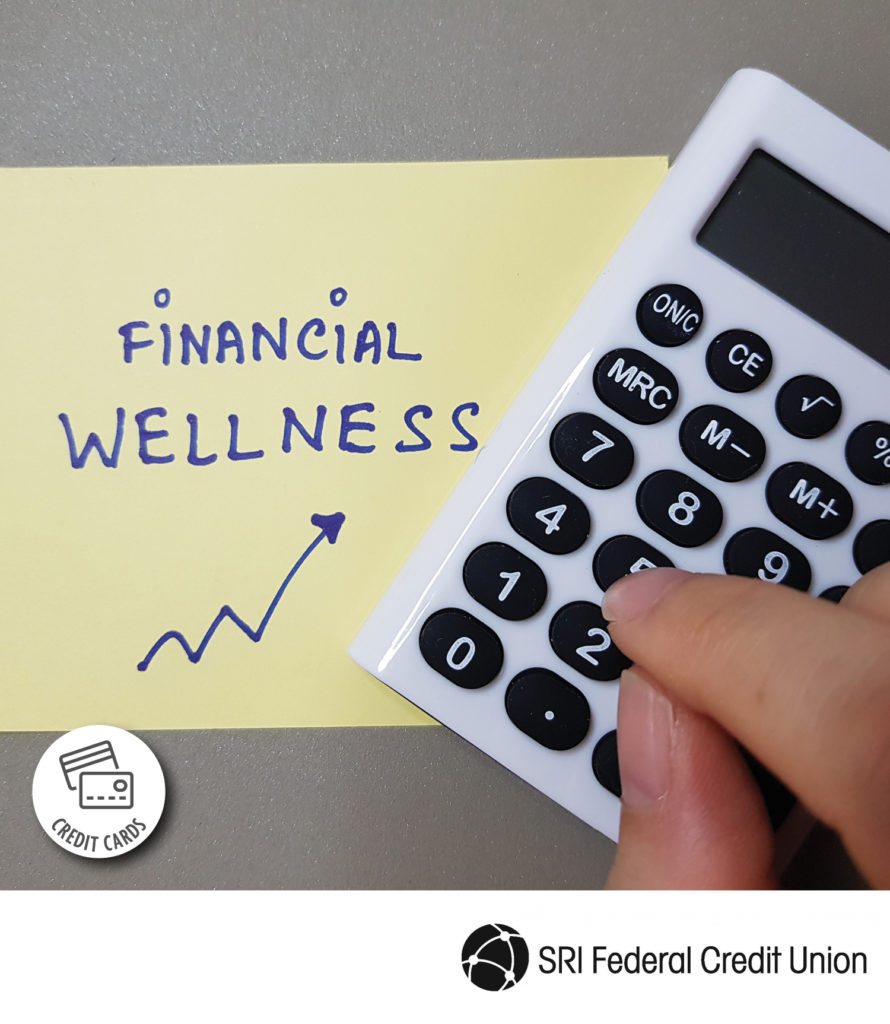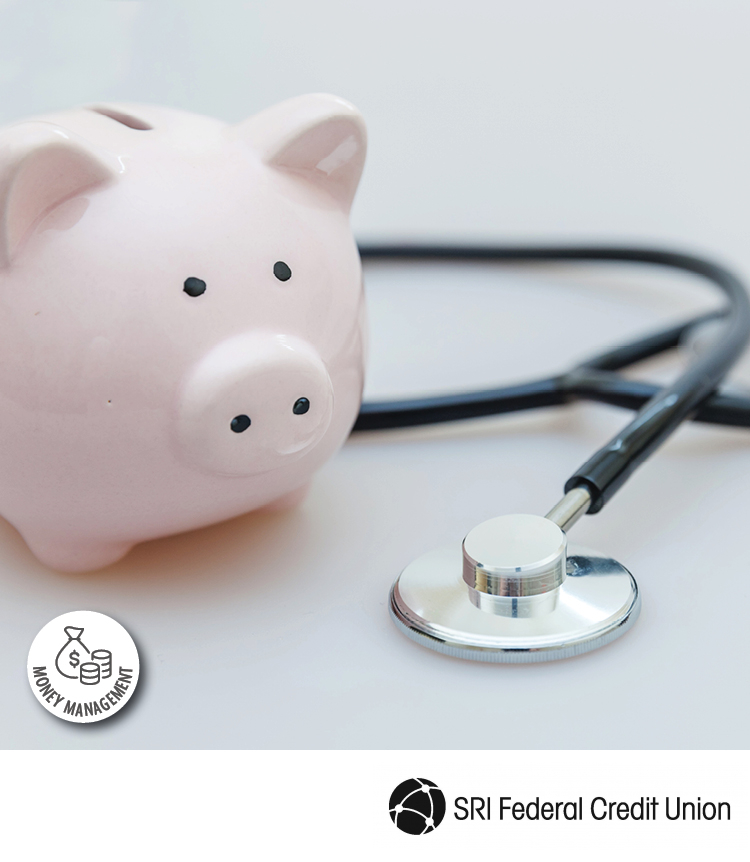Posts by Francisco Saenz
Step 9 of 12 Steps of Financial Wellness-Build and Maintain an Excellent Credit Score
Your credit score is a crucial part of your financial health. The three little numbers measure the capacity of your credit, the proficiency of your money management, and your fiscal responsibility. Let’s explore the best ways to build and maintain an excellent credit score. Have several active credit cards Many consumers mistakenly believe the path toward great credit is through swearing off all credit cards. However, building and preserving a healthy credit score requires owning a card or two and keeping them active. If you’re just starting out, consider signing up for a beginner’s card, which generally features easy eligibility requirements and very little available credit. Otherwise, be sure you have a minimum of three open cards and that you use them on a regular basis. To keep your cards active without having an open balance, you can pay one fixed monthly bill, such as a subscription or monthly membership fee, with each of your credit cards. Set up an automatic monthly payment for the bill by linking your credit card, and then set up an automatic monthly payment for the credit card, too, by linking your checking account to the card. Choose to have the money transferred before the bill is actually due. This way, your cards will be open and active and you’ll never have a late payment, which would negatively impact your credit score. Several months of using your cards responsibly will generally help move your credit score upward. Work on paying down debt If you’ve landed deep in debt and can’t find a way out, now’s the time to work on kicking that debt for good. First, choose your debt-crushing method: The snowball method works by putting all available funds toward paying off the smallest amount of debt first, and then the next smallest, until all debts are paid off. The avalanche method works the same way, but pays off the debt with the highest interest rate first, and then the next highest until all debts are paid off. With the snowball method, you’ll see results quicker but may ultimately pay more in overall interest. Choose the method that works best with your personality, goals, and lifestyle. Next, list your debts. If you’re going with the snowball method, list in order from lowest amount to largest. If you’ve chosen to use the avalanche method, list your debts in descending order of interest rate. You’re now ready to pay down those debts! Review your monthly budget to find a way you can trim your expenses, or look for a side hustle, and use the extra cash to maximize your payments toward the debt you’re working on first. Keep at it until you’re debt-free. It may take a while to crush a mountain of debt, but showing the credit bureaus that you’re on track to pay off that debt can do wonders for your score. Pay your bills on time Paying credit card bills when, or before, they’re due is a major factor in determining your score. Carrying an outstanding balance, and/or owing lots of interest, shows that you are not timely with your bills and can’t be counted on to repay loans responsibly. As mentioned, you can set up automatic monthly payments for your bills so you’re never late. Just make sure you keep the account you are paying from well-funded to cover your payments as they come out. Bring down your credit utilization ratio Another crucial factor contributing to your score is your credit utilization ratio. This refers to the amount of available credit you have and use. It’s best to keep your utilization under 30%, or even 10% if you can. To that end, make sure you’re using just a bit of your available credit each month. In addition, consider accepting offers for increased credit – as long as you know you won’t rack up huge bills by having all that additional credit. Keeping an excellent credit score is a key factor in financial wellness. Use the tips outlined here to build and maintain a great score.
How to Budget in Times of Inflation
With inflation at record highs, many Americans are finding it difficult to stick to a budget. After all, when groceries have leaped in price and household staples can be double, or even triple, what they cost just a year ago, how can the same amount of money get you through the month? Sticking to a budget during times of high inflation is challenging – but not impossible. Here are five ways to budget while in times of inflation. Groceries can take a huge bite out of a monthly budget. Fortunately, there are ways to trim your grocery bill, even when prices are soaring. First, shop your pantry and fridge before hitting the store. You may not remember exactly what you have at home, and doing a quick scan of your food items can help you stick to purchasing only what you need. Next, plan your week’s dinner menu before shopping so you can pick up exactly what you need for the week in just one go. The fewer trips you make to the grocery, the less you’ll spend on impulse buys. Also, when you have the ingredients you need and plans in place for dinner each night of the week, you’ll be less likely to make a last-minute decision to indulge in takeout or fast food. Consider joining a club store at this time as well. You’ll need to spring for a membership, but you’ll enjoy steep savings on groceries and other products. Just be careful to only buy what you need, no matter how cheap an item might be. Finally, don’t forget to shop sales and to couponize. Use apps like Reebee, Checkout 51, Flipp, and Grocery IQ to stay in the know of what’s on sale in each store, and to download coupons for even bigger savings. With winter approaching and the cost of energy sources still climbing, this can be a good time to have an energy audit performed on your home. An audit will help identify energy drains around your home, such as air leaks near your windows and doors, so you can fix them to make your home more energy-efficient. You can also take additional measures toward saving on energy costs, such as switching all lightbulbs to LED bulbs, unplugging electronics when not in use, and setting your thermostat a little lower during winter, and a bit higher in the summer. Everyone needs to treat themselves to something special every now and then, but with costs rising on restaurant meals, movie tickets, and clothing, something’s gotta give. Take a closer look at your just-for-me purchases of the last few months, and try to narrow them down to just one or two treats. You can swap them with an enjoyable activity that doesn’t cost much, such as a hike or bike ride, or cut them out completely. Alternatively, you can find ways to trim the cost of your indulgences. For example, if you love dining out but restaurant meals are destroying your budget, you can decide to eat out but skip the desserts and wines, or opt for a midday meal so you can take advantage of lunchtime specials. If you’ve had your auto insurance policy for a while and you’ve maintained a good driving record during that time, there’s a good chance you can save a bundle by switching to a new insurance plan and/or provider. Reach out to a representative at your current insurer to discuss your options. Ask about raising your deductible in exchange for a lower premium, reducing overall coverage or negotiating for a safe driving discount. After obtaining a quote, call several other providers to get competing quotes. You can choose to go with your lowest offer, or call back your present provider and ask them to match it for your continued business. As always, when income doesn’t meet expenses, you have the choice of trimming expenses or boosting your income – or you can do both! In addition to following the cost-cutting tips outlined here, you can also look for ways to increase your income. If your paycheck is suddenly not enough to support your lifestyle, consider asking for a raise. Your workplace may have already given you a cost-of-living raise to reflect rising inflation last year, but this may prove to be insufficient as costs have continued to rise. Don’t be afraid to ask for another raise at this time. In addition, you can look for other ways to pad your monthly income. Find a side hustle, like driving for a ride-share company or consulting for hire, which you can do at your leisure on weekends. Ask your workplace about taking on additional projects on an as-needed basis for additional pay. Open a small service business doing something you love and excel at. Every extra dollar earned counts! Times are hard for the average American consumer, but with careful planning, you can ride out the record-high inflation rates and keep your budget intact. Use the tips shared here to get started.
How Can I Save on Holiday Shopping?
Q: I’m always worried about money during the holiday season, and with inflation soaring, I’m more stressed than ever. How can I save on holiday shopping this year? A: If you’re worried about making it through the holiday shopping season in the midst of record inflation, you’re not alone. A recent survey shows that 59% of American shoppers are stressed about buying holiday gifts this season due to higher prices. However, with some careful planning and budgeting, you can enjoy stress-free holiday shopping. Here are seven easy ways you can save during this holiday season. It’s always a good idea to do your shopping early in the season so pressure and crowds don’t cause you to make decisions you’ll come to regret. This year, experts are urging shoppers to hit stores earlier than normally planned so they can take advantage of early season sales. Many big-box stores are struggling with a supply surplus thanks to an inflation-triggered decline in demand. This will likely lead to sales events to make room for more up-to-date inventory. You can take advantage of this surplus by shopping these sales and saving on your holiday purchases. 2. Set a budget Budgets are for holidays, too. Sit down before doing your shopping to build a reasonable budget for your holiday shopping. Factor in current prices when working out your budget. Of course, this is only half the work – you’ll need to stick to that budget for it to be worth anything. Make this easier by allocating a specific amount for every gift, shopping with cash and/or reviewing your budget frequently as you do your holiday shopping. Instead of hitting the stores blindly, create a list of every gift you plan to buy for friends and family. You can browse online stores for inspiration, but resolve not to start shopping until you have a complete list. You’ll be far more likely to stay within budget when your purchases are pre-planned. While it’s best to do the bulk of your shopping early in the season, you can leave some last-minute gift shopping for Green Monday, which falls on Dec. 14 this year. This is when retailers make their final pre-holiday markdowns. Be prepared for slim pickings, though, so don’t leave any specific gifts for this late in the season. If ever there was a holiday season to get creative with your gifting, this is it. Retail inventories are full of products that were backed up during the post-pandemic supply-chain disaster. Think furniture, home decor and more. While much of this may not make for typical holiday gifts, there’s no real reason you can’t delight a loved one with a new office chair, exercise bike or coffee organizing station. Protect your gift list against inflation by giving gift cards. You can find discounted cards on sites like GiftCardGranny and CardCash, or use cash-back apps to earn them at no cost. Gift cards are easy to shop for, easy to budget for and always appreciated by the receiver. In 2022, there are so many apps that can help you spend less on your shopping, and even put money back in your pocket. Here are some money-saving apps you might want to download ahead of this shopping season: Holiday shopping may be a race against inflation this year, but with a little pre-planning, you can complete your shopping with your budget intact. Use the money-saving tips outlined here to get started.
10 Reasons To Be Thankful For Your Credit Union
We often take life’s many gifts for granted by failing to appreciate them deeply enough. Thanksgiving offers the perfect opportunity to reflect upon everything that is wonderful in our lives and to show our gratitude for each and every gift we’ve been given. This Thanksgiving, give thanks for your credit union! Let’s review 10 reasons to be grateful you belong to SRI Federal Credit Union. 1. Superior member service At SRI Federal Credit Union, you’re always greeted with happy faces and representatives who are ready and willing to help you. There’s no cold, sterile atmosphere here! Instead, at SRI Federal Credit Union, every member is part of the family. We’re truly invested in your financial wellness and we’re here to help you achieve and maintain it, every step of the way. 2. You have access to better savings rates We’re not paying dividends to stockholders, and that means we have more savings to pass back to you. At SRI Federal Credit Union, we’re proud to offer you share certificate, money market and savings rates that are well above the national average. Make sure to check out our rates as they have increased dramatically! 3. We make it easy to qualify for credit The absence of a national bank corporate office enables us to be more flexible about offering lines of credit. We don’t have to abide by overly strict credit qualifications — and neither do you! That makes it easier for you to open a new line of credit, even if your existing credit isn’t perfect. 4. We offer lower interest rates Need a stash of cash? Stop by SRI Federal Credit Union and take your pick of personal loans, home loans, auto loans and more, all with reasonable interest rates that are often lower than the regional or national average. We’ll help you get the funds you need with a payback plan you can actually afford! 5. Your money is safe here Federally insured credit unions and banks both offer insurance on accounts of up $250,000. But credit unions are also subject to strict regulations on their investments and loans. This means you can keep your money here without worrying about its security. 6. [Free/ Low-cost] Checking Accounts Our checking accounts exist to provide you with a safe, convenient place to store your money — not to milk you for it. Checking accounts at SRI Federal Credit Union are completely free to set up and maintain. Conversely, according to a MoneyRates survey, the average monthly maintenance fee for a checking account at a bank is $12. That’s nearly $150 coming out of consumers’ pockets each year! At SRI Federal Credit Union you’ll have a safe place to keep your money. 7. You own a piece of your credit union Credit unions are member-owned and member-operated. You get to weigh in on our major decisions instead of being forced to follow along with whatever the higher-ups decide. Your money=your choices. 8. We support small businesses Credit unions are invested in the success of local small businesses. Here at SRI Federal Credit Union, we offer business accounts so you can run the financial side of your business without worrying about expensive fees. 9. Fewer fees Banks are notorious for slapping consumers with fees at any given opportunity. From steep overdraft fees to costly ATM fees, there’s another bill to pay at every turn! Here at SRI Federal Credit Union, we want to help you keep as much of your money as possible. Any fees we do have are nominal and generally lower than what banks demand. We also want you to have access to your money without worrying about expensive ATM fees. To that end, we provide our members with a large network of ATMs with ATM fee reimbursement on all checking account transactions up to $5 per transaction. 10. You have access to a variety of financial services At SRI Federal Credit Union, we’re a lot more than just a gigantic piggy bank. We provide members with an array of financial services to meet every money-related need at every life stage. These include credit cards with no annual fees and low-interest rates, Home Equity Lines of credit for both primary and non-owner occupied residences, direct deposit, wire services, financial education, personal loans, vehicle loans, notary services, online banking, and more! As a member of a credit union, your money is always in good hands. Aren’t you thankful you belong to SRI Federal Credit Union?
Empower Your Financial Future with a Credit Union
On October 20, 2022, SRI Federal Credit Union will join over 56,000 credit unions around the world to celebrate International Credit Union (ICU) Day®. The theme of ICU Day 2022 is “Empower Your Financial Future with a Credit Union.” ICU Day highlights the many ways that credit unions across the world help members improve their financial health and well-being. Credit unions were built on the principle of “people helping people.” We’ve seen that philosophy in action for more than 100 years, with credit unions providing access to affordable financial products and striving to meet the needs of underserved communities. SRI Federal Credit Union is honored to be a part of this proud tradition. We invite both members and nonmembers to visit our Ravenswood branch and celebrate this day. If you can’t make it on the 20th, you can still come it and ask for a Halloween t-shirt while they last (sizes and quantities are limited). Hope to see you all there.
The Tesla Model 3
The Tesla Model 3 at a Glance:
- Vehicle type: Electric-powered, 4-door, 5-passenger, AWD sedan
- Base price: $48,440
- Power: 450 hp@5000 rpm
- Charge time: Supercharge 175 miles in 15 minutes; level 2 can charge 80% in 3-6
- Range per charge: 358 miles per charge
- EPA fuel efficiency: 118/MPGe city, 107 MPGe highway
Pros Cons Infotainment Safety features Interior If you’re looking to finance an auto loan for your new car, look no further than SRI Federal Credit Union! Our auto loans offer low-interest rates, a 0.26% rate discount for Zero Emissions Vehicles, easy payback terms, and a quick approval process. Click here to get started or discuss available options!
The Benefits of Getting a Loan for Your Manufactured or Mobile Home Through a Credit Union
In today’s sizzling housing market, purchasing a manufactured or mobile home can be a great way to find an affordable place to call home. However, you’ll likely need a way to fund this sizable purchase. Although smaller than a typical home loan, a loan for covering a manufactured or mobile home is a big deal, so you’ll want to choose your lender carefully. Unfortunately, most large lenders and banks offer little flexibility in terms, conditions and rates when it comes to financing manufactured or mobile homes. A credit union, on the other hand, can be a great way to cover the cost of one of these homes. Let’s take a look at some of the benefits of financing a manufactured or mobile home loan through a credit union. One of the primary advantages of taking out a home loan from a credit union is lower interest rates on your loan. As member-owned institutions with lower operational costs, credit unions are better able and willing to offer favorable interest rates on all large loans. This difference can equate to thousands of dollars in savings over the life of the loan. And while this benefit is a boon in any kind of large loan, it’s especially important in a manufactured or mobile home loan, which tend to have higher interest rates than conventional home loans. Qualifying for a manufactured or mobile home loan through a bank can be a long and frustrating process. You’ll need to meet a long list of rigid requirements, including a high credit score, low debt-to-income ratio and more before being approved. When you take out a similar loan from a credit union, though, you can expect a more flexible process. If you’re already a member of the credit union, you’ll likely be approved for your loan fairly quickly. Otherwise, it will take a bit longer for you to join the institution and qualify for the loan, but if your finances are in order and your credit score is strong, you’ll likely be approved without too much trouble. Credit unions are famous for their superior service levels. As smaller, community-minded institutions, credit unions pride themselves on building and maintaining a personal connection with each member. You can expect to experience a high level of service throughout the application process and the life of the loan. Member service representatives will always be available to answer any questions you may have and to assist you with any issues relating to the loan. Home owners choosing to take out a home loan through a bank or large lender will typically see their lender change several times throughout the life of the loan. This happens when a bank or lender sells a mortgage to another company. While the homeowner’s monthly payment terms won’t change when this happens, adjusting to the various kinds of service and communication methods of a new lender time and again can be bothersome and frustrating. When you take out a loan from a credit union, you can generally expect to be paying this same institution until the loan is paid in full. As a means of better managing your cooperatively owned financial institution, some credit unions do choose to sell the loan to another lender, but will still retain the servicing of the payments to ensure that frustration isn’t a factor. You’ll enjoy the same level of service and communication throughout the loan, without surprises. As smaller, member-owned institutions, credit union rules are rarely unyielding. When you take out a manufactured or mobile home loan through a credit union, they’ll be happy to work with you to customize aspects and details of the loan to better meet your needs. Taking out a manufactured or mobile home loan from a credit union has several distinct advantages as described here. To learn more about SRI Federal Credit Union’s loans, call, click or stop by today!
6 Ways to Pay Less at the Pump
Just when you think they can’t possibly jump any higher, gas prices start rising again. They’ve long passed the $5 mark in much of the country, and in some areas, they’ve even gone beyond $6 a gallon. This means it’ll cost the average American close to $100 just to fill a 16-gallon tank. With prices peaking on so many other goods, the pain at the pump is real. There isn’t much you can do about the cost of gas, but there are ways you can pay less at the pump. Here are six ways to save on the cost of gasoline. Lots of gas stations offer a discount for cash payments, sometimes up to $0.20 per gallon. This can quickly add up when pumping a full tank. Just be careful to have the cash handy when you need it, as you don’t want to lose all those savings to ATM fees when using machines that are not connected to your credit union. If you don’t like the idea of carrying around a lot of cash, but you still want to save at the pump, consider signing up for a rewards program or credit card. Tread carefully, though; not all of these programs actually benefit the consumer. Ask these questions about any rewards program or credit card you’re considering before signing up: In addition, consider your personal track record with credit cards before signing up for a gas rewards credit card. If you already find it challenging to pay off your balance in full each month, it may not be the best idea to open another credit card. 3. Check your tire pressure According to the US Department of Energy, a well-inflated tire can save you $0.15/gallon by boosting your gas mileage by 3%. Check your tires regularly to ensure they’re always inflated. To make this easier, consider springing for a tire pressure gauge that will automatically monitor the health of your tires. In 2022, there’s no need to search for the gas station offering the best-priced gas. There’s an app for that! Popular gas-tracking apps include GasBuddy, Upside and Waze. Using the gas station conveniently located right near your home or workplace might be easier, but taking the extra time to find one that sells fuel for less can save you a bundle. If you don’t already have one, this may be the time to buy a club membership. Costo, Sam’s Club and Walmart Plus all offer discounted gas exclusively to members. Of the three, Costco tends to feature gas for the lowest price, up to $0.34 less per gallon than a typical gas station. In today’s gas-crazy climate, that’s a huge difference. Of course, you’ll want to find out how much a club membership will cost you before signing up to join any of these or other club stores to ensure it’s worth the price. Also, be prepared for long lines at the club store’s gas station, especially with spiking gas prices. Did you know there’s an ideal time of day to fill your tank? And no, we’re not talking about shorter lines, or even the time of day before prices will change yet again. You can get more bang for your buck if you buy your gas in the early morning or late evening hours, when it’s generally cooler out. If you pump gas during the midday hours, after the sun has been beating down on the gas reservoir all day, the gas has likely expanded. This means you’ll be paying the same price for a less-dense gasoline, which will not last as long. Pump when it’s cooler outside for the densest gas. It’s sticker shock at the pump these days, but there are still some ways you can save on gas costs. Use these tips to get started.
12 Steps to Financial Wellness- Step 8 Know When and How to Indulge
Now that you know how to spend mindfully, pay it forward, and regularly set aside money for savings, you’re ready to learn how to indulge in the occasional expensive treat–responsibly. Many people equate financial health with a life of deprivation, but this is far from the truth. In fact, living a life of true financial wellness means being happy with a lifestyle that is within your means, but does not leave you feeling like you are lacking. Like an overly restrictive diet, an overly tight budget is more likely to become broken. On the flip side, financial wellness means spending your money wisely and learning how to treat yourself for less – or for free. It means money choices are governed by discipline, and not by emotion. And sometimes, it means telling yourself no. How, then, do you strike a balance between the two? Here’s how to indulge responsibly. Live with a budget The first step to financial wellness is knowing where your money is going and how much you actually have to spend. The best way to always have this information is to create and stick to a budget. [If you’ve been following all the steps to financial wellness until this point, you’ve already developed and live with a budget. So you know how to stick to it. Let’s take a quick review of this crucial money management tool.] Create your budget by tracking your spending for three months. Make a list of all your expenses, including fixed, non-fixed and discretionary expenses, and list your income in a parallel column. Tally up your totals and assign a realistic dollar amount to each expense. Going forward, be sure to only spend within the allocated amount for each expense category each month. Leave room in your budget for “just for fun” purchases As you work on building and sticking to a budget, be sure to leave room in your spending plan for the occasional treat. The exact amount will vary by income level, lifestyle and personal choice. However, choose an amount you can easily afford without feeling deprived. To ensure you don’t overspend in this area, you can borrow an idea from the money-envelope system and withdraw the designated amount from your checking account at the beginning of the month. Place this cash in an envelope, and use it as necessary. When the money is gone, so is your “allowance” for pricey treats this month. It’s important to note that the indulgences referenced here are spontaneous buys, or small purchases that aren’t part of your normal budget. Large purchases you have planned for and saved toward for months, or even years, are in an entirely different category. Review your savings Before giving yourself permission to indulge, make sure you are setting aside a percentage of your monthly income to savings. Savings should be an item line on your budget, with short-term savings like an emergency fund in a savings account, holding enough to keep you afloat for 3-6 months if you have no source of income. Long-term savings should be sufficient to support your retirement and any long-term savings goal you may have, like saving for a house or a luxury vacation. Choose your “treats” Everyone’s got their personal vices and their guilty indulgences. Take a look at where your non-discretionary money went during the last month or two. Highlight the more expensive impulse buys and hold them up to these questions: Here, too, the answers to these questions will depend on your personal set of circumstances and lifestyle. Use the insight you’ve learned about your indulgences to help you make better money choices in the future. Lose the guilt Once you’ve decided how much you want to spend each month on indulgences you can afford, it’s time to let go of the guilt. If you’re spending responsibly and you’ve already fed your savings as well as your future, there’s no need to eat yourself up over an impulse buy you could have done without. As long as you’re keeping these just-for-fun purchases within your budget, and your choices fill you with happiness or positive energy, you can still maintain your financial wellness.
What is the Dark Web?
Q: I’ve heard of the dark web, but I never understood what this term means. What is the dark web? How is it accessed? Is there any way to keep my information out of its depths?
A: The dark web is the deepest layer of the internet that isn’t visible to the average browser. Unfortunately, its name is a perfect description of its function, as the dark web is full of illegal activities and crimes. Let’s take a closer look at the dark web and how you can protect your information from being caught in its trap. What is the dark web? The internet has been likened to an iceberg. There is very little of it that is truly visible above the surface, but it is enormous, dark and deep underneath. There are three basic components of the internet: Despite its name, not all of the activity that takes place on the dark web is illegal. The deepest part of the internet also provides a platform for communication and commerce among people living in countries that have heavy censorship over online activity. In addition, the dark web was originally used by the United States Department of Defense to communicate anonymously. Unfortunately, though, the dark web remains a hotbed of criminal activity. Loads of illegal trade takes place through the dark web, including drugs, firearms, counterfeit money, subscription credentials and personal information of thousands of targets. The inherent anonymity of the dark web allows hackers and scammers to roam free without fear of being caught. How does the dark web work? The dark web, and by extension the Tor browser, uses a technology known as “onion routing.” This technology uses multiple layers of encryption and redirection to assure anonymity for every browser. When a browser tries to access a site on the dark web, its information will be routed through thousands of relay points, making it impossible to identify and trace. How can I protect myself from the dark web? It’s important to take preventative measures to protect your information from the dark web. Here’s how: The dark web is fraught with danger and impossible to trace but there are ways to protect your information. Use the tips outlined here to stay safe.











